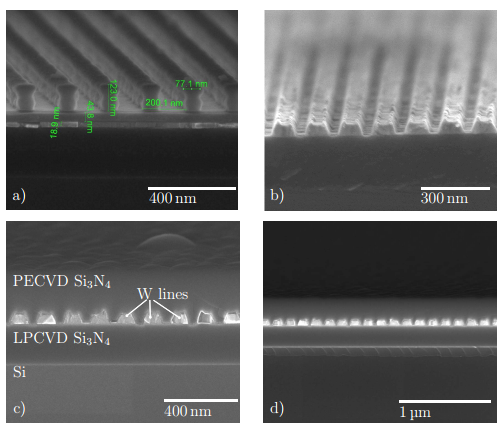|
Magnetic hard discs can store data for little more than a decade. But nanotechnologists have now designed and built a disk that can store data for a million years or more Back in 1956, IBM introduced the world’s first commercial computer capable of storing data on a magnetic disk drive. The IBM 305 RAMAC used fifty 24-inch discs to store up to 5 MB, an impressive feat in those days. Today, however, it’s not difficult to find hard drives that can store 1 TB of data on a single 3.5-inch disk.
But despite this huge increase in storage density and a similarly impressive improvement in power efficiency, one thing hasn’t changed. The lifetime over which data can be stored on magnetic discs is still about a decade. That raises an interesting problem. How are we to preserve information about our civilisation on a timescale that outlasts it? In other words, what technology can reliably store information for 1 million years or more? Today, we get an answer thanks to the work of Jeroen de Vries at the University of Twente in the Netherlands and a few pals. These guys have designed and built a disk capable of storing data over this timescale. And they’ve performed accelerated ageing tests which show it should be able to store data for 1 million years and possibly longer. These guys start with some theory about ageing. Clearly, it’s impractical to conduct an ageing experiment in real time, particularly when the periods involved are measured in millions of years. But there is a way to accelerate the process of ageing. This is based on the idea that data must be stored in an energy minimum that is separated from other minima by an energy barrier. So to corrupt data by converting a 0 to a 1, for example, requires enough energy to overcome this barrier. The probability that the system will jump in this way is governed by an idea known as Arrhenius law. This relates the probability of jumping the barrier to factors such as its temperature, the Boltzmann constant and how often a jump can be attempted, which is related to the level of atomic vibrations. Some straightforward calculations reveal that to last a million years, the required energy barrier is 63 KBT or 70 KBT to last a billion years. “These values are well within the range of today’s technology,” say de Vries and co. And to prove the point, they go ahead and build a disk capable of storing information for this period of time. The disk is simple in conception. The data is stored in the pattern of lines etched into a thin metal disc and then covered with a protective layer. The metal in question is tungsten, which they chose because of its high melting temperature (3,422 degrees C) and low thermal expansion coefficient. The protective layer is silicon nitride (Si3N4) chosen because of its high resistance to fracture and its low thermal expansion coefficient. These guys made their disc using standard patterning techniques and stored data in the form of QR codes with lines 100nm wide. They then heated the disks at various temperatures to see how the data fared. The results are impressive. According to Arrhenius law, a disk capable of surviving a million years would have to survive 1 hour at 445 Kelvin, a test that the new disks passed with ease. Indeed, they survived temperatures up to 848 Kelvin, albeit with significant amounts of information loss. That compares well with the Rosetta Project, a proposal by the Long Now Foundation to create archival materials capable of storing information for periods in excess of 10,000 years. The new work suggests we ought to be able to preserve a significant amount of information for future civilisations, perhaps even alien ones. There are caveats, of course. The theory behind accelerated aging only applies in very specific circumstances and says nothing about survivability in other cases. It’s hard to imagine the new disk surviving a meteor strike, for example. Indeed, it would be unlikely to survive the temperatures that can occur in an ordinary house fire. But de Vries and co are confident that they can make even more robust data storage systems. Their work is an interesting step towards preserving our data for future civilisations. Ref: arxiv.org/abs/1310.2961 : Towards Gigayear Storage Using a Silicon-Nitride/Tungsten Based Medium http://www.technologyreview.com/view/520541/million-year-data-storage-disk-unveiled/ Comments are closed.
|
Archives
March 2021
|

 RSS Feed
RSS Feed